Jim Crow Museum
1010 Campus Drive
Big Rapids, MI 49307
[email protected]
(231) 591-5873
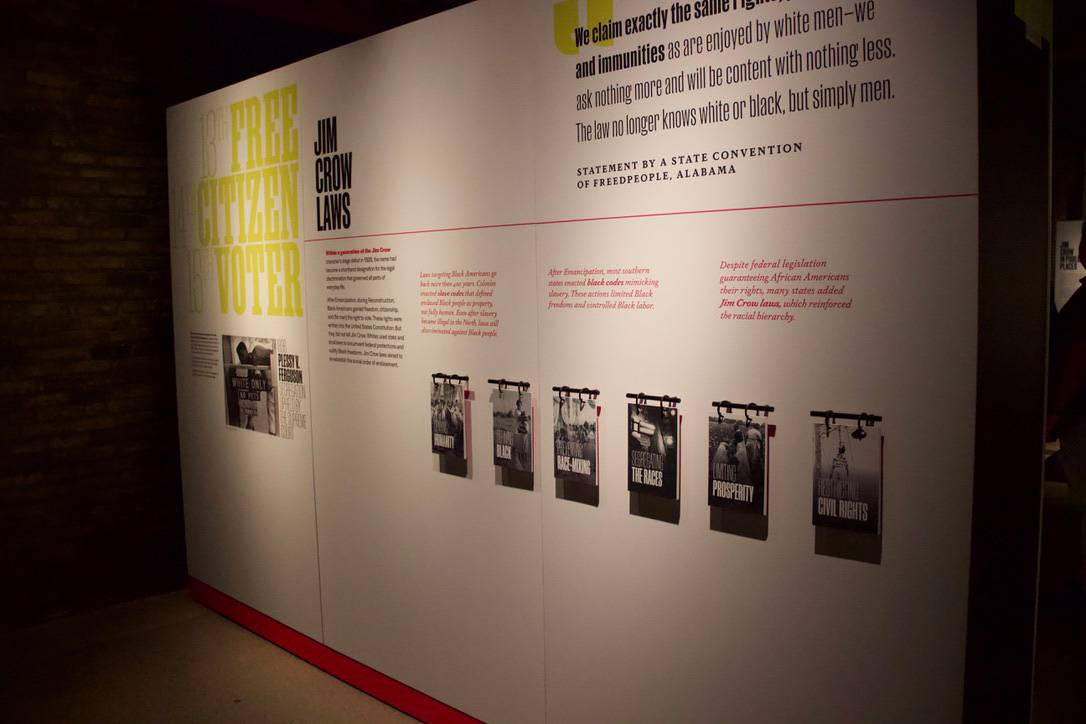
Pushback narratives are prominent in the Jim Crow Traveling Museum, Overcoming Hateful Things. In this installment of Question to the Museum, we will share some of the featured pushback narratives that are in our traveling exhibition.
Jim Crow laws were systematically enacted across all states. There was a notable opposition from civil rights lawyers to these statutes within the judicial framework. African American attorneys viewed the federal courts as the foremost platform for challenging Jim Crow laws and practices. The traveling exhibition Overcoming Hateful Things showcases six cases to illustrate the perseverance required for these hard-fought victories, despite the fact that some of these courtroom triumphs would require years to be implemented uniformly across all states.
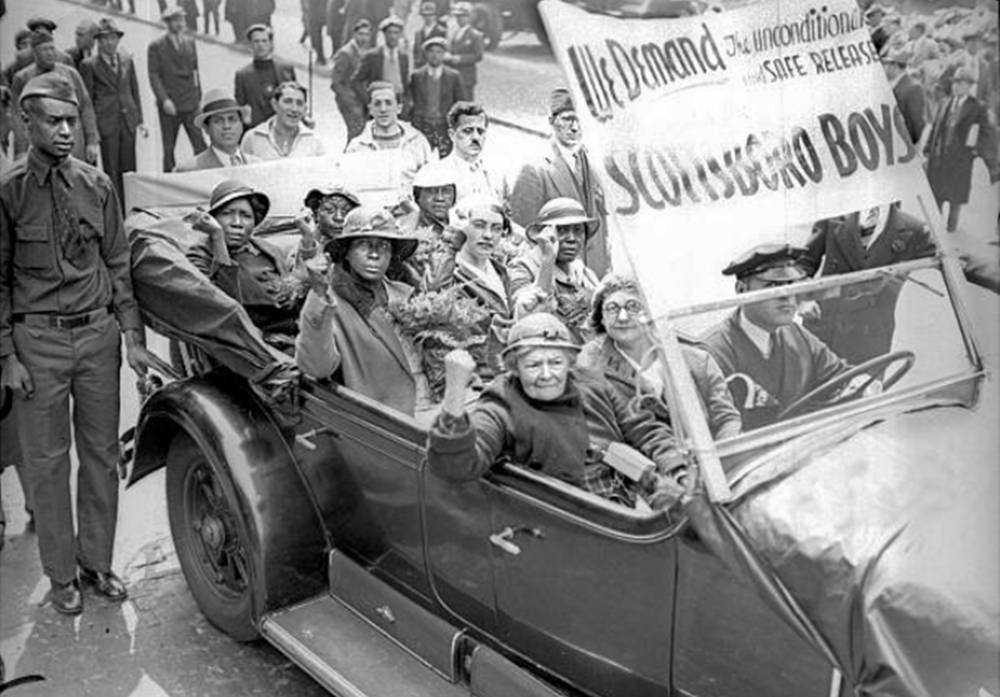
MOTHERS OF THE SCOTTSBORO BOYS PROTEST FOR JUSTICE, 1934
The Scottsboro Boys were nine Black teenagers falsely accused of raping two white
women aboard a train near Scottsboro, Alabama, in 1931. An all-white jury convicted
the boys and sentenced eight of them to death. They appealed their case, and in November
1932, the United States Supreme Court ruled that the defendants had been denied the
right to counsel, which violated their right to due process under the 14th Amendment.
It set an important legal precedent for enforcing the right of African Americans to
counsel, but the defendants battled the courts and endured the harsh Alabama prison
system through years of retrials.
"The lesson to black people, to my children, to everybody, is that you should always
fight for your rights, even if it cost you your life. Stand up for your rights, even
if it kills you. That's all that life consists of."
~Olen Montgomery, Scottsboro Boy
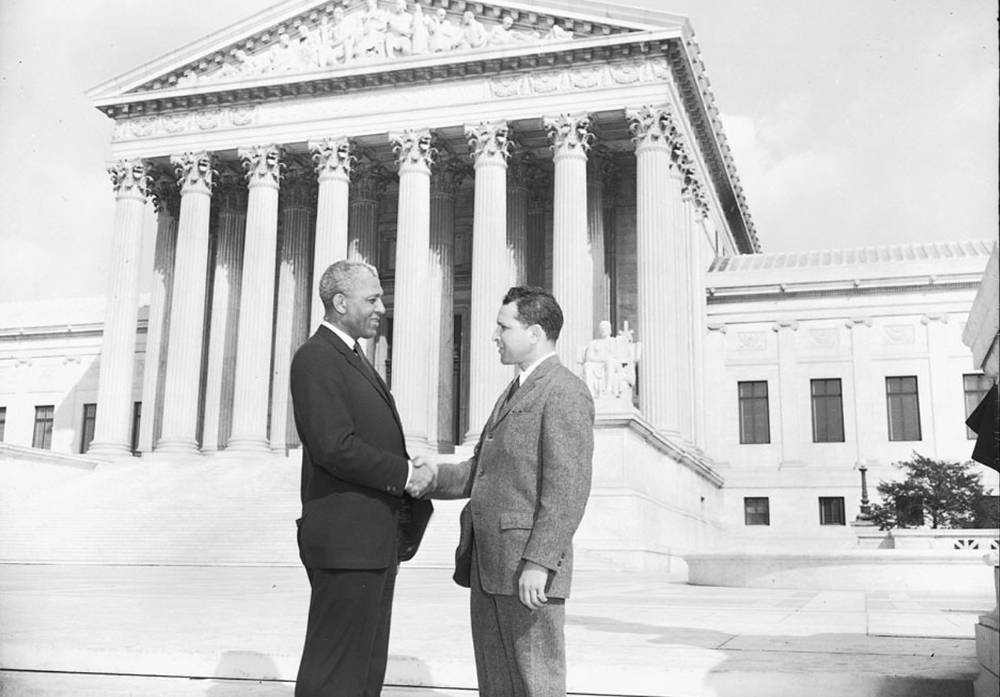
NEW NEGRO ALLIANCE FOUNDER BELFORD LAWSON (LEFT) OUTSIDE THE UNITED STATES SUPREME COURT, 1960
When businesses in Washington, DC, refused to hire Black workers, the New Negro Alliance
picketed the stores. The Sanitary Grocery chain challenged their right to protest—and
lost. The victory protected the right of citizens to picket and encouraged the use
of this crucial form of civic protest. Belford Lawson, a Ferris Institute alumnus,
argued the case, becoming the first African American to win a case before the United
States Supreme Court.48
“Do your part! Don’t buy where you can’t work!”
~New Negro Alliance picket slogan to encourage hiring of Black workers
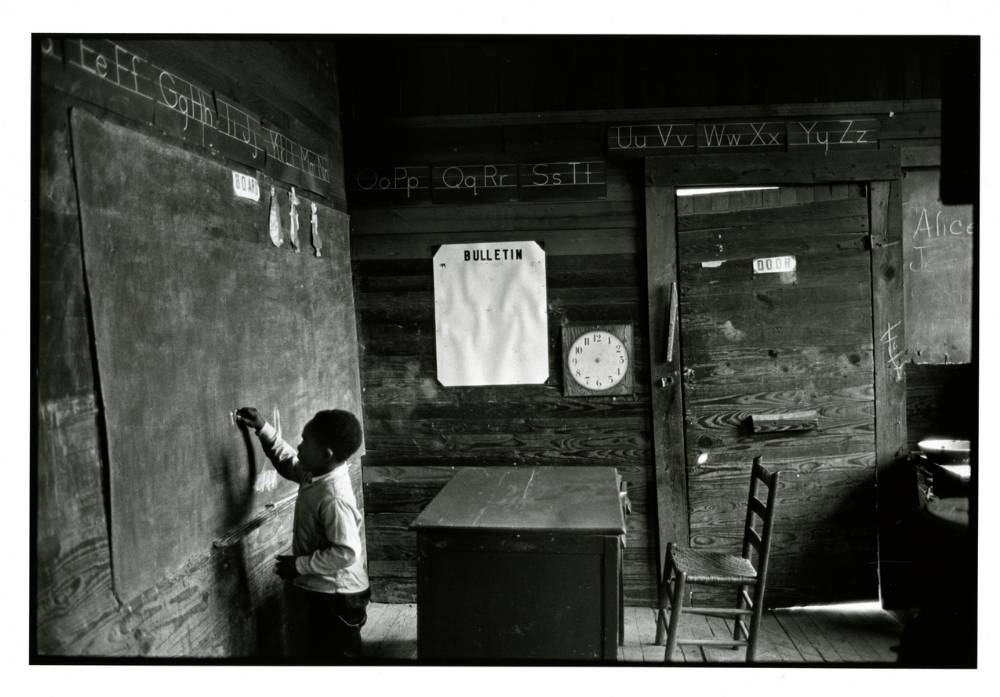
STUDENT AT A SEGREGATED SCHOOL COURTESY OF BRUCE DAVIDSON / JCM COLLECTION
On May 17, 1954, in a landmark decision in the case of Brown v. Board of Education
of Topeka, Kansas, the United States Supreme Court declared state laws establishing
separate public schools for students of different races to be unconstitutional. The
decision dismantled the legal framework for racial segregation in public schools and
Jim Crow laws, which limited the rights of African Americans, particularly in the
South.49
“There must be some reason which gives the state the right to make a classification…
in regard to Negroes. The only thing can be an inherent determination that the people
who were formerly in slavery… shall be kept as near that stage as is possible…. We
submit that this Court should make it clear that that is not what our Constitution
stands for.”
~Thurgood Marshall, remarks in Brown v. Board of Education
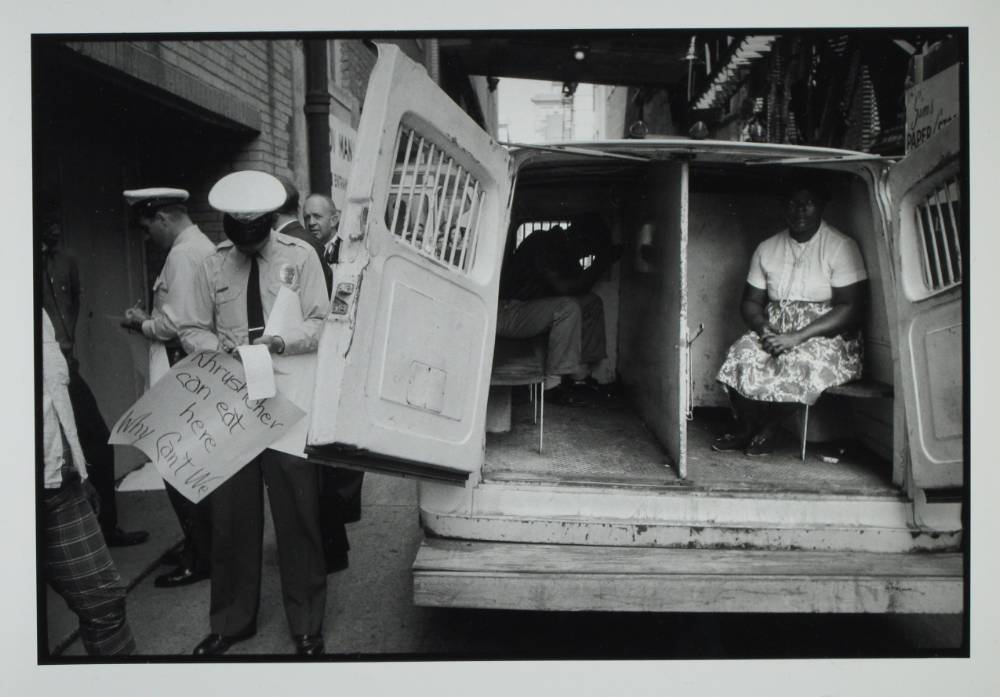
AN ANTI-SEGREGATION PROTESTER SITS IN A POLICE VEHICLE FOLLOWING HER ARREST COURTESY OF BRUCE DAVIDSON / JCM COLLECTION
This federal act prohibits discrimination on the basis of race, color, religion, sex or national origin. It ends segregation in public places.
“What are the demands of the march? Effective civil rights legislation.... Immediate desegregation of the nation’s schools. An end to police brutality.... A massive Federal Public Works Program to provide jobs.... A national minimum wage.”
- Demands of the 1963 March on Washington, which helped spur the passage of the Civil Rights Act
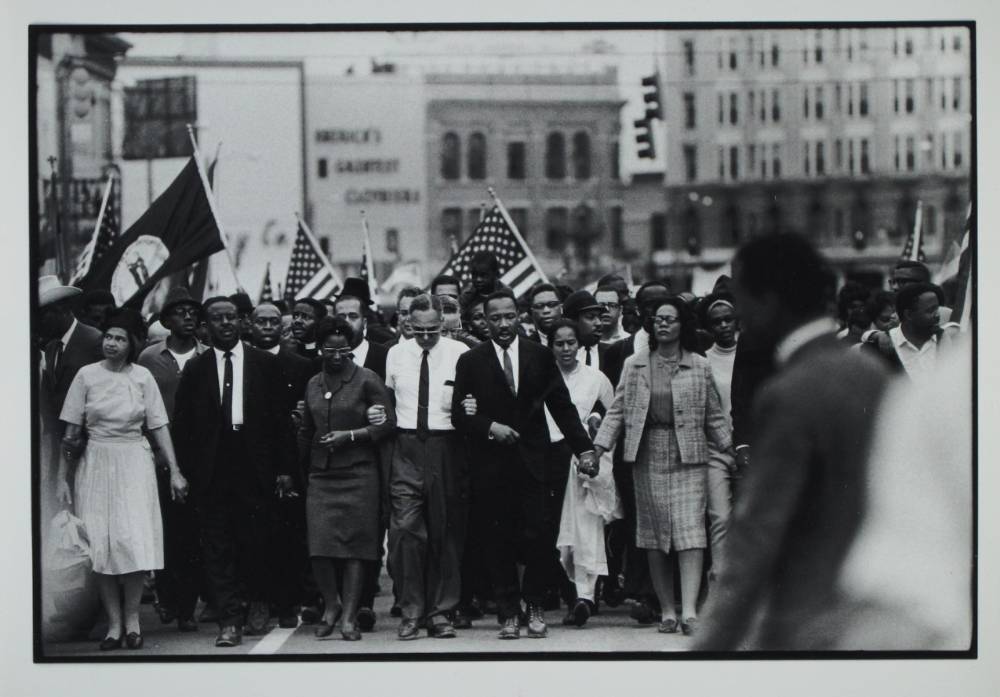
DR. MARTIN LUTHER KING JR. AND CORETTA SCOTT KING LEAD MARCHERS TO THE ALABAMA STATE CAPITOL DURING THE PROTEST FOR VOTING RIGHTS, 1965 COURTESY OF BRUCE DAVIDSON / JCM COLLECTION
This act enforces the 15th Amendment. It outlaws discriminatory voting practices enacted at the state level that prevent African Americans from exercising their right to vote.
“‘You can’t tell me that I can’t register. For I own 140 acres of land. I’ve got ten children.... I took these hands that I have and made crops to put them through school. If I am not worthy of being a registered voter, then God have mercy on this city.’”
- Voting rights activist Amelia Boynton recalling a Black voter’s response to a white registrar
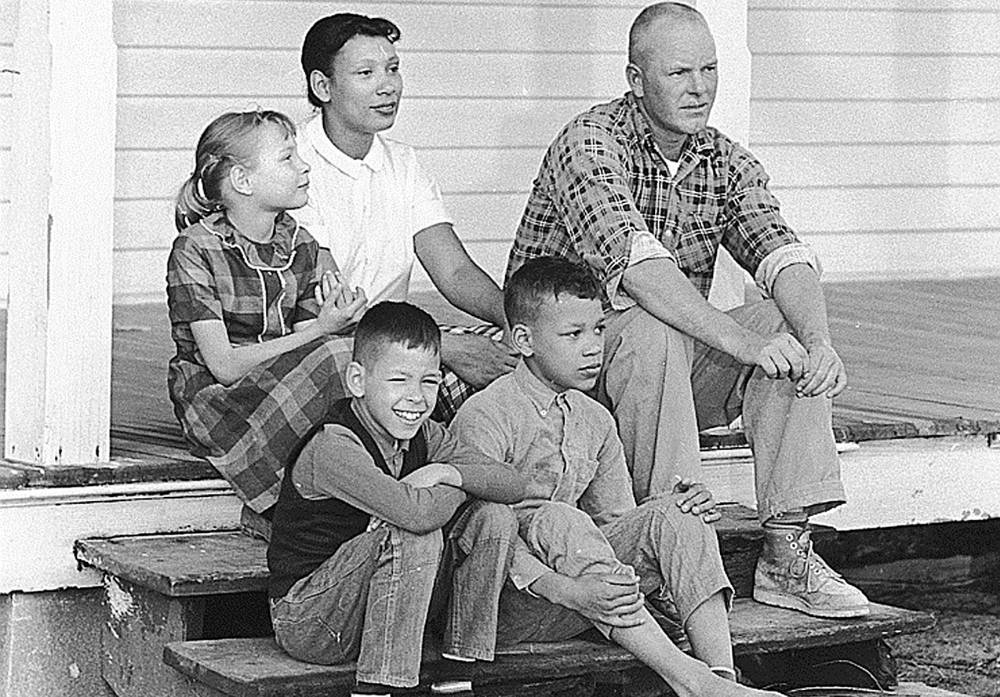
RICHARD AND PEGGY LOVING AND THEIR CHILDREN AT HOME, VIRGINIA, 1967
Richard and Mildred Loving were an interracial married couple arrested in 1958 for violating Virginia’s Racial Integrity Act. In their case, the United States Supreme Court ruled that the prohibition of interracial marriage was unconstitutional. Sixteen states that still banned interracial marriage at the time were forced to revise their laws.
“Under our Constitution, the freedom to marry, or not marry, a person of another race resides with the individual, and cannot be infringed by the State."
~United States Supreme Court Chief Justice Earl Warren, 1967